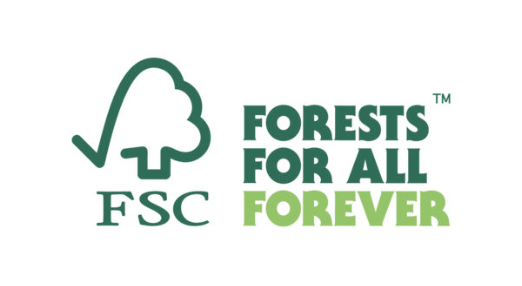Small and Farm Woodland of the Year Award 2023
Congratulations go to gold winners, Oaks Wood, Kendal, owned by Romola and Edward Acland, and to silver winners, Hale Moss Wood and Meadows, Milndale, Lancashire, owned by Roger and Nancy Cartwright.
This Award recognises and rewards smaller woods which have been actively managed in the last ten years, and is aimed principally at the hands-on woodland owner, including farmers.
1 Oaks Wood, Kendal, owned by Romola and Edward Acland

Pictured: Edward and Romola Acland in Oaks Wood
“We were impressed at the way in which the owners have improved deer control by fencing and strengthening the wall, restored a management system of hazel and ash coppice with oak standards, and consequently much improved the regeneration and biodiversity of the woodland.
“A factor we valued highly was the importance given to monitoring the management system, modifying it in the light of experience, and carrying out their plans with a high degree of competence.” Judges.
Key points
- 0.802ha Ancient Semi Natural Woodland (ASNW)
- Coppice cycle introduced after 25+ years of neglect
- Producing firewood and quality coppice material for hedging stakes, hazel rods, pea sticks, gate hurdles.
“We purchased the wood 30 years ago, when it had been unmanaged for at least 30 years. It is now a thriving productive woodland supplying quality coppice products along with structural diversity and a rich variety of habitats in a small area.
“We feel it is a showcase for what could be achieved in so many small woodlands around us which at present are decaying – that management for biodiversity and production can very much go hand-in-hand. We have found the work (carried out almost entirely with hand tools) fulfilling and enjoyable, and the space an increasing delight to be in.” Romola and Edward Acland.

Pictured: From left, Andy Sharkey (FSC, Sponsor), Oaks Wood owners Romola and Edward Acland, Bryan Elliott (Judge) and RFS President, Ben Herbert
Oaks Wood was purchased in 1992 and now forms part of the owners’ 6.5ha smallholding which is in Higher Level Stewardship.
Over the last five years the average annual revenue from sale of coppice products (in addition to that kept for personal and family use) has been £780. The owners believe this small farm woodland is an example of how many others could be brought into management again with benefits all round.
The management objectives are to:
- Maintain and enhance its biodiversity
- Maintain and enhance its landscape value
- Produce small wood/coppice products.
Oaks Wood lies in the River Kent valley with a backdrop of higher fells in the Lake District National Park. It is visually important as a small island in the grassland, clearly defined by a boundary wall, and visible from several nearby public footpaths, including the long-distance Dales Way.
Past management had been as hazel and ash coppice with oak standards. Edward and Romola have mended boundaries, reinstated a coppice cycle for ash, hazel and sycamore and installed and monitored bird and bat boxes. Coppice growth from 1-8 years old has now created great structural diversity, while less intensively managed areas add yet more.
2 Hale Moss Wood and Meadows, Milnthorpe, straddling the Cumbria and Lancashire borders, owned by Roger and Nancy Cartwright

Pictured: Roger Cartwright in Hale Moss Wood
“We were very impressed by the owner’s ambition, clarity of purpose and skill sustained over decades. He made best use of agricultural and conservation support grants to secure the co-operation of many partners, and co-ordinated their activities to sustain appropriate systems of agriculture, woodland and wildlife management. The result is a unique site of enhanced biological richness and landscape interest.” Judges
Key points
- Woodland in transition through a wet-woodland phase towards “Moss” restoration
- 6ha within the Arnside Silverdale National Landscape (Area of Outstanding Natural Beauty – AONB)
- Veteran trees in groves of oak and Scots pine.
“I am pleased that I have been able to demonstrate that it is possible to retain and manage woodland on a former peat bog as low input low output wood pasture.
“When I visited Wild Ennerdale and later, heard the Knepp Estate story, I also realized that in the last 30 years, what I had begun to achieve with our landscape and woodland restoration at Hale Moss was a small scale example of ‘rewilding’!” Roger Cartwright.

Pictured: From left, Bryan Elliott (Judge), Andy Starkey (FSC, Sponsor), Hale Moss Wood owner Roger Cartwright and RFS President, Ben Herbert
The ‘Mosses’ were raised mires that developed in the basins of post-glacial freshwater lakes. They were used for peat cutting until the 18th century when they were drained and ‘improved’.
The Cartwrights purchased the site in four separate land parcels between 1993 and 1994. They have been joined together to form a mosaic of habitats that for the last ten years has been managed as part of a Higher Level Stewardship partnership, with other woodland owners and graziers.
Careful species choice and planting, water management and co-operation with landowning and grazing neighbours, means the woodland is now in transition through a wet-woodland phase towards “Moss” restoration.
The result is a rich landscape of native woodland, with groves of veteran oak and Scots pine that supports a diverse, multi-aged plant community in an increasingly wet habitat. Undergrowth and tree regeneration are successful, and the wood is rich in insects, mammals and birds.
Windthrown oak has produced useful sawn timber, and firewood and coppice products are obtained from thinning and cutting of underwood, and from cut or pollarded ash trees as these are affected by die back.
Herb rich grassland glades and hay meadows are cut annually, and the aftermath is lightly grazed by native cattle and fell ponies. Boundary hedges are maintained.


